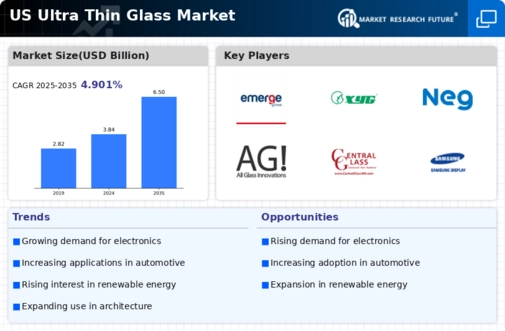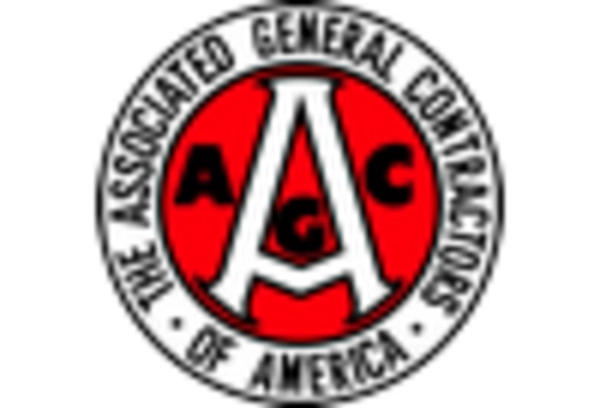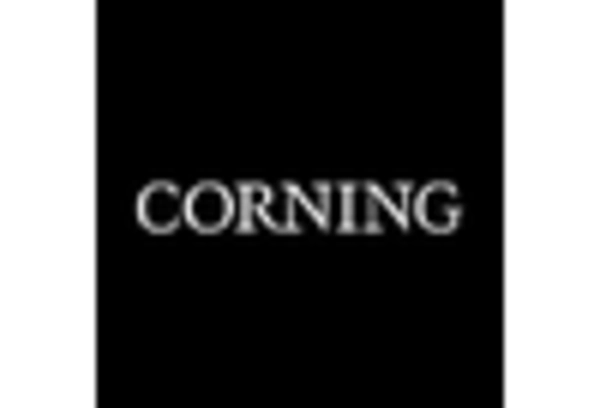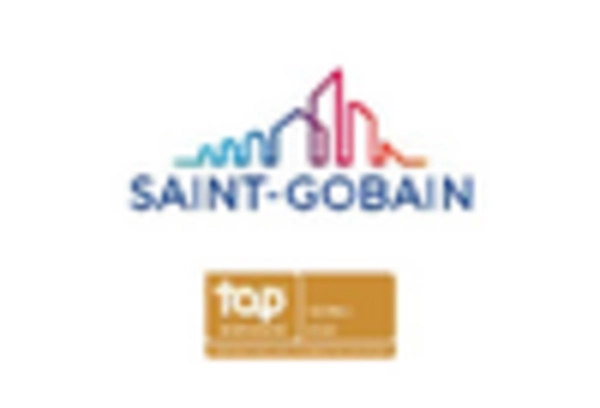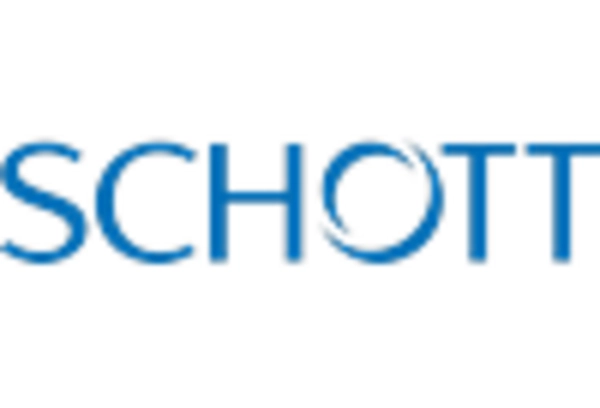The ultra thin-glass market is characterized by a dynamic competitive landscape, driven by technological advancements and increasing demand across various sectors, including consumer electronics and automotive industries. Key players such as Corning Inc (US), AGC Inc (Japan), and Guardian Glass (US) are strategically positioned to leverage innovation and operational efficiencies. Corning Inc (US) focuses on enhancing its product portfolio through continuous research and development, while AGC Inc (Japan) emphasizes regional expansion and partnerships to strengthen its market presence. Guardian Glass (US) is actively pursuing digital transformation initiatives to optimize its manufacturing processes, collectively shaping a competitive environment that prioritizes innovation and responsiveness to market needs.The market structure appears moderately fragmented, with several players vying for market share through localized manufacturing and supply chain optimization. This competitive structure allows for a diverse range of products and services, catering to the specific needs of various industries. The collective influence of these key players fosters a competitive atmosphere where agility and adaptability are paramount, enabling companies to respond effectively to evolving consumer preferences and technological advancements.
In October Corning Inc (US) announced a strategic partnership with a leading automotive manufacturer to develop ultra thin-glass solutions tailored for electric vehicles. This collaboration is expected to enhance the performance and aesthetics of vehicle displays, positioning Corning as a frontrunner in the automotive sector. The strategic importance of this partnership lies in its potential to capture a growing market segment focused on sustainability and advanced technology in transportation.
In September AGC Inc (Japan) unveiled a new production facility dedicated to ultra thin-glass manufacturing in the United States. This investment not only signifies AGC's commitment to meeting local demand but also enhances its supply chain efficiency. The establishment of this facility is strategically important as it allows AGC to reduce lead times and improve service levels for its North American customers, thereby strengthening its competitive position in the region.
In August Guardian Glass (US) launched an innovative digital platform aimed at streamlining customer interactions and enhancing the ordering process for ultra thin-glass products. This initiative reflects Guardian's focus on digital transformation and customer-centricity, which are increasingly vital in today's market. The strategic significance of this platform lies in its ability to improve customer experience and operational efficiency, potentially leading to increased market share.
As of November current competitive trends in the ultra thin-glass market are heavily influenced by digitalization, sustainability, and the integration of artificial intelligence. Strategic alliances are becoming increasingly important, as companies seek to enhance their technological capabilities and market reach. The competitive differentiation is likely to evolve from traditional price-based competition to a focus on innovation, advanced technology, and reliable supply chains. This shift underscores the necessity for companies to invest in R&D and forge strategic partnerships to remain competitive in a rapidly changing landscape.


